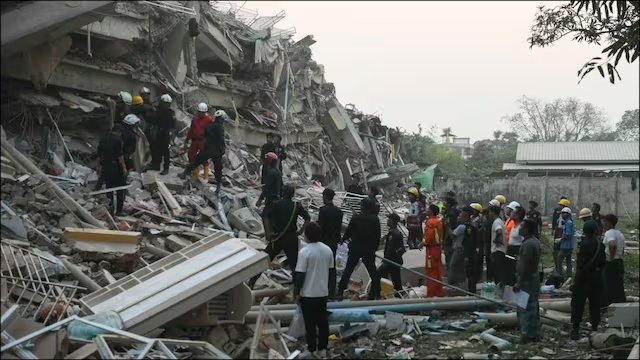Myanmar Earthquake: The death toll from Friday’s strong 7.7-magnitude earthquake in Myanmar has increased to more than 1,700, with over 3,400 individuals harmed and many still unaccounted for, reported the country’s ruling junta on Sunday, as per AFP.
In Bangkok, Thailand’s capital, 18 fatalities have been confirmed due to the collapse of an under-construction high-rise that trapped several workers.
The earthquake struck at noon on Friday, with its epicenter near Mandalay, destroying buildings, damaging roads, and toppling the control tower at Naypyidaw’s airport—severing connections for a country already ravaged by civil conflict.
The odor of rotting corpses filled the streets of Myanmar’s second-largest city on Sunday as desperate hands sifted through heaps of debris, wishing for any indication of life beneath the ruins, AP reported. Two days following the catastrophic earthquake, Mandalay’s streets resembled a graveyard—corpses decaying under the scorching sun, survivors pleading for lost family members, and a nation nearing collapse.
International aid has begun to come in slowly, but it could be insufficient and overdue. India dispatched two C-17 military planes equipped with a field hospital and a team of 118 personnel, while China contributed 135 rescuers and $13.8 million in emergency aid. Russia, Singapore, and Malaysia have extended their help as well, but due to impassable roads and nonfunctional airports, delivering supplies has turned into a logistical challenge.
Aid operations have been hindered by warped roads, collapsed bridges, unreliable communications, and the difficulties of functioning in a nation engulfed in civil conflict.
Residents have mainly carried out the search for survivors without heavy machinery, clearing debris manually and using shovels in the intense heat of 41 degrees Celsius (106 degrees Fahrenheit), with just an occasional tracked excavator visible.













